Family: Cimbicidae
Family common name: cimbicid sawflies
Subfamily: Cimbicinae
Genus: Cimbex Olivier, 1791
Subgenera: none
The family Cimbicidae is relatively uncommon and little-studied in North America. However, their large size and aposematicaposematic:
having warning coloration, indicating that an insect is unpalatable or venemous or otherwise dangerous
coloring make the family somewhat conspicuous (Taeger et al. 1998Taeger et al. 1998:
Taeger A, Altenhofer E, Blank SM, Jansen E, Kraus M, Psychorn-Walcher H, and Ritzau C. 1998. Kommentare zur biologie, Verbreitung und Gefahrdung der Pflanzenwespen Deutschlands (Hymenoptera, Symphyta). Kommentierte Bestandsaufnahme 364 (3): 49-135.). Cimbicidae are robust, with the general shape of a bee, long hairs, and clubbed antennaeantenna:
the sensory organ emerging from the front of the head, usually between the compound eyes and above the clypeus; includes the flagellum, scape and pedicel
 (Smith 1993Smith 1993:
(Smith 1993Smith 1993:
Smith DR. 1993. Systematics, life history, and distribution of sawflies. Pp. 3-32. In: Wagner MR and Raffa KF, eds. Sawfly Life History Adaptations to Woody Plants. University of Minnesota Academic Press. 581 pp.).
Cimbex are considered one of the “giant” sawflies because of their large size compared to most other Symphyta. Some individuals in the genus can reach 30 mm in length. The large size and yellow and black striped coloration mimics wasps from the family Vespidae, specifically Vespa spp. (yellowjackets). Males have enlarged mandibles and hind legs. (Vilhelmsen 2019Vilhelmsen 2019:
Vilhelmsen L. 2019. Giant sawflies and their kin: morphological phylogeny of Cimbicidae (Hymenoptera). Systematic Entomology 44: 103-127. https://doi.org/10.1111/syen.12314). However, because coloring and size can be variable, sex is most easily determined by the presence or absence of an ovipositorovipositor:
the female organ that deposits eggs and is used to drill into plant tissue, located at the apex of the abdomen, made up of the lance and lancet
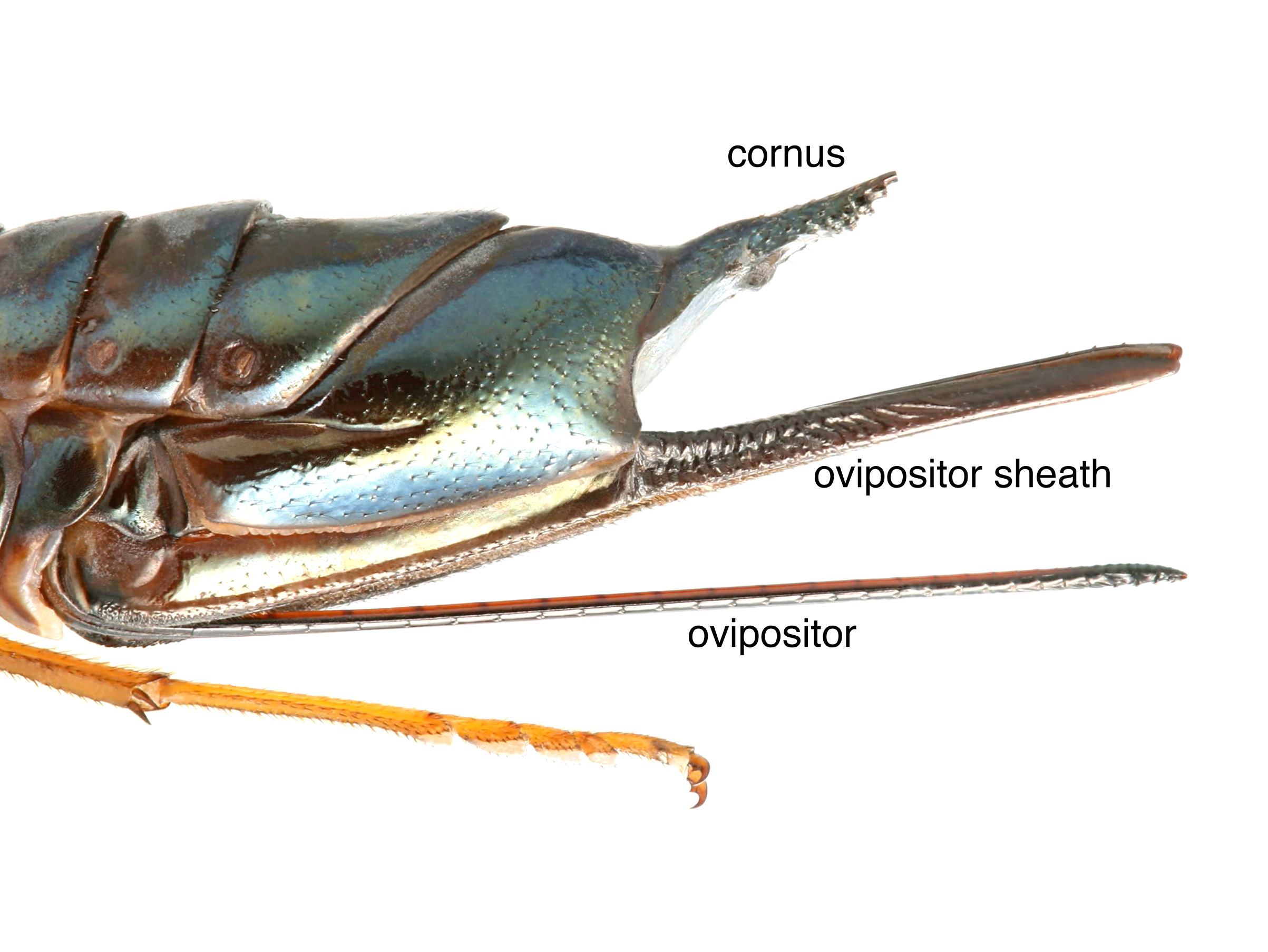 (Smith 1993Smith 1993:
(Smith 1993Smith 1993:
Smith DR. 1993. Systematics, life history, and distribution of sawflies. Pp. 3-32. In: Wagner MR and Raffa KF, eds. Sawfly Life History Adaptations to Woody Plants. University of Minnesota Academic Press. 581 pp.).
Worldwide, there are 17 extantextant:
in existence; opposite of extinct
described species restricted to the Northern Hemisphere. Four species occur in North America (Taeger et al. 2010Taeger et al. 2010:
Taeger A, Blank SM, and Liston AD. 2010. World Catalog of Symphyta (Hymenoptera). Zootaxa 2580: 1-1064.).
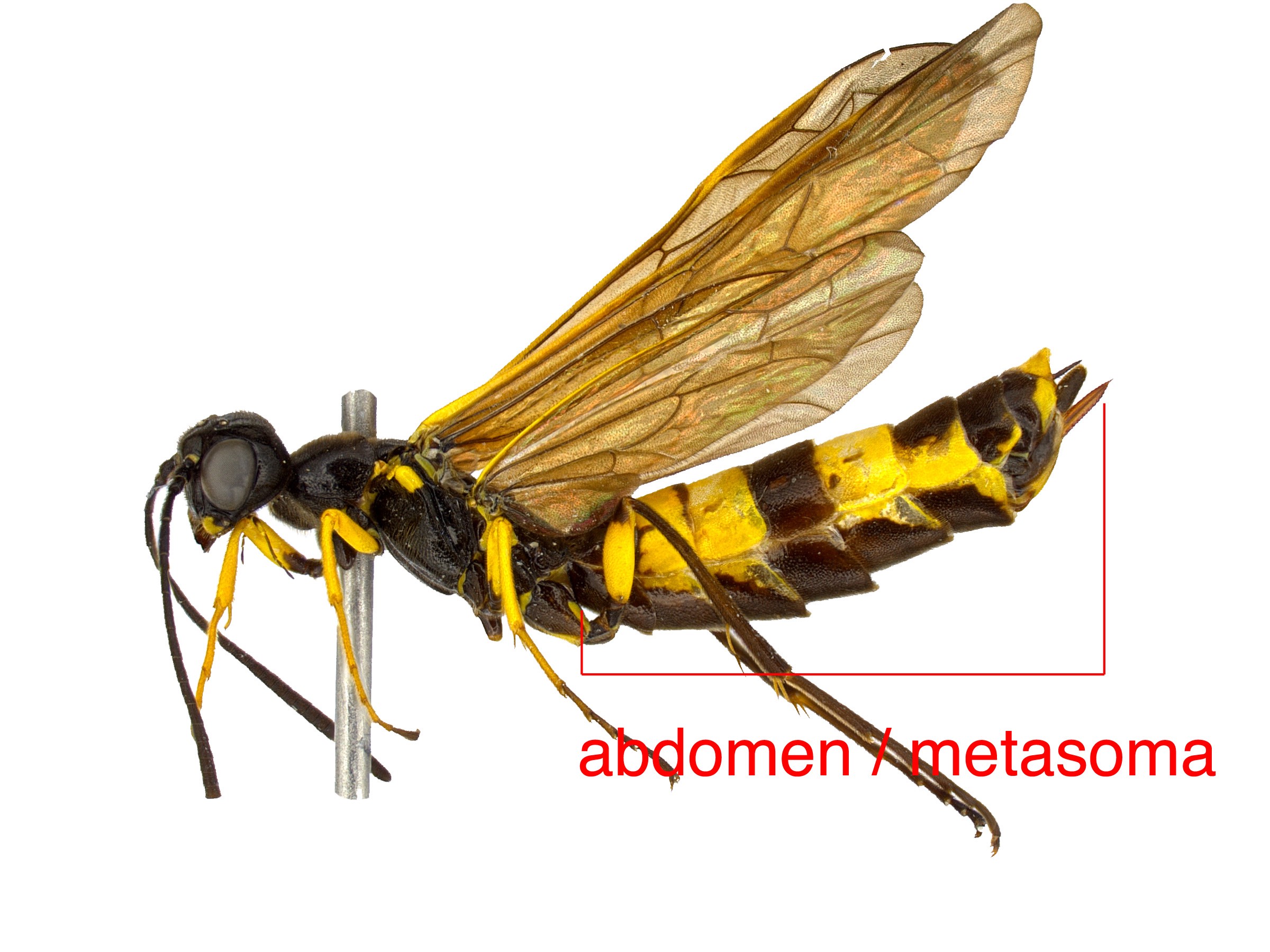 (Nikolic et al. 2007Nikolic et al. 2007:
(Nikolic et al. 2007Nikolic et al. 2007: (Nikolic et al. 2007Nikolic et al. 2007:
(Nikolic et al. 2007Nikolic et al. 2007: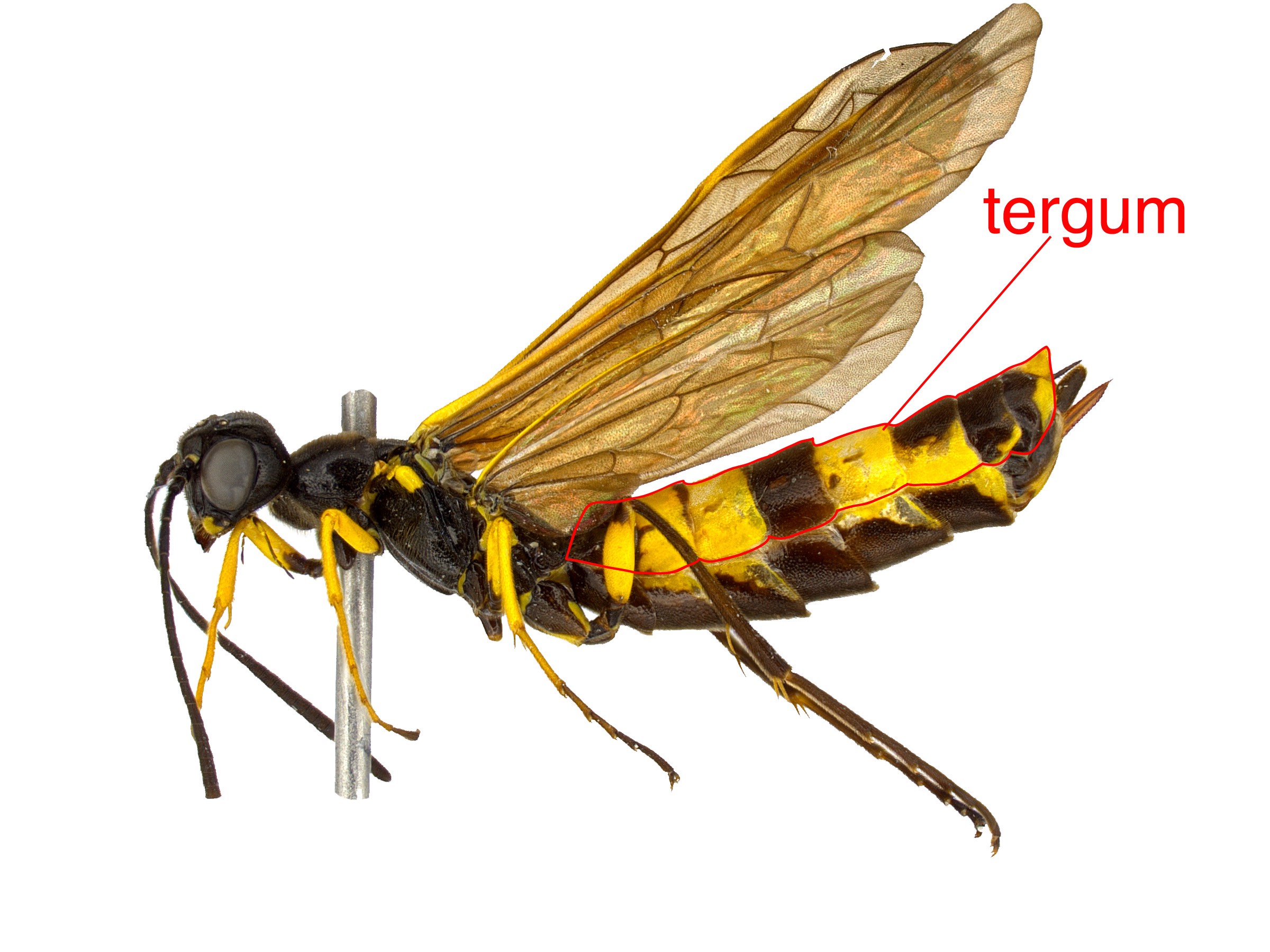 separated from the dorsaldorsal:
separated from the dorsaldorsal: small (Taeger et al. 1998Taeger et al. 1998:
small (Taeger et al. 1998Taeger et al. 1998:Cimbex can be confused with other Cimbicidae. In North America, they can be distinguished from Abia
Factsheet for:Abia
Glossary:labial palpus:
appendage emerging laterally from the labium
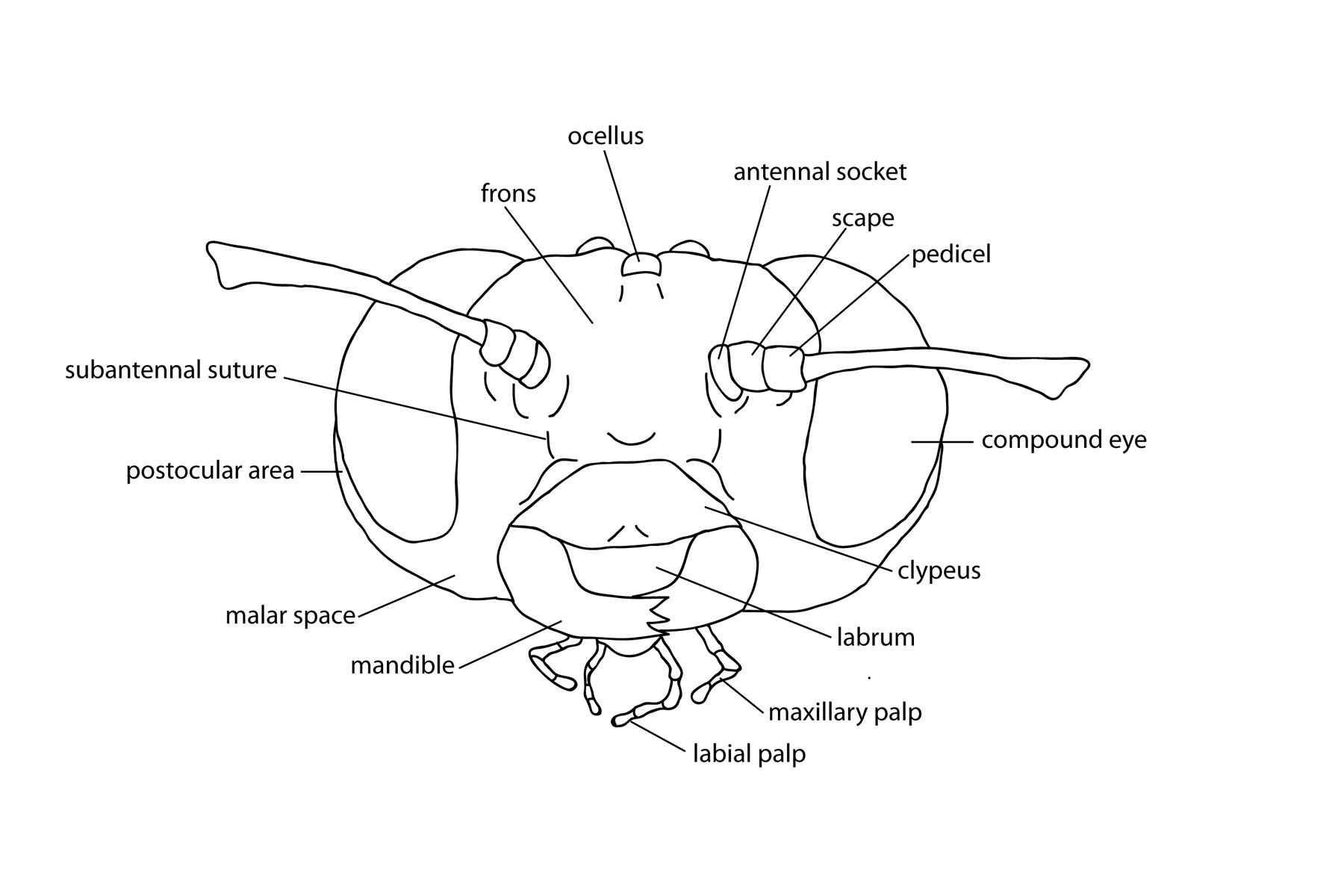 by the body size and the parallel inner edges of the eyes, and from Trichiosoma by the lack of apicalapical:
by the body size and the parallel inner edges of the eyes, and from Trichiosoma by the lack of apicalapical:
towards the apex; farthest away from the body
spur on the femorafemur:
the third segment of the leg between the trochanter and the tibia
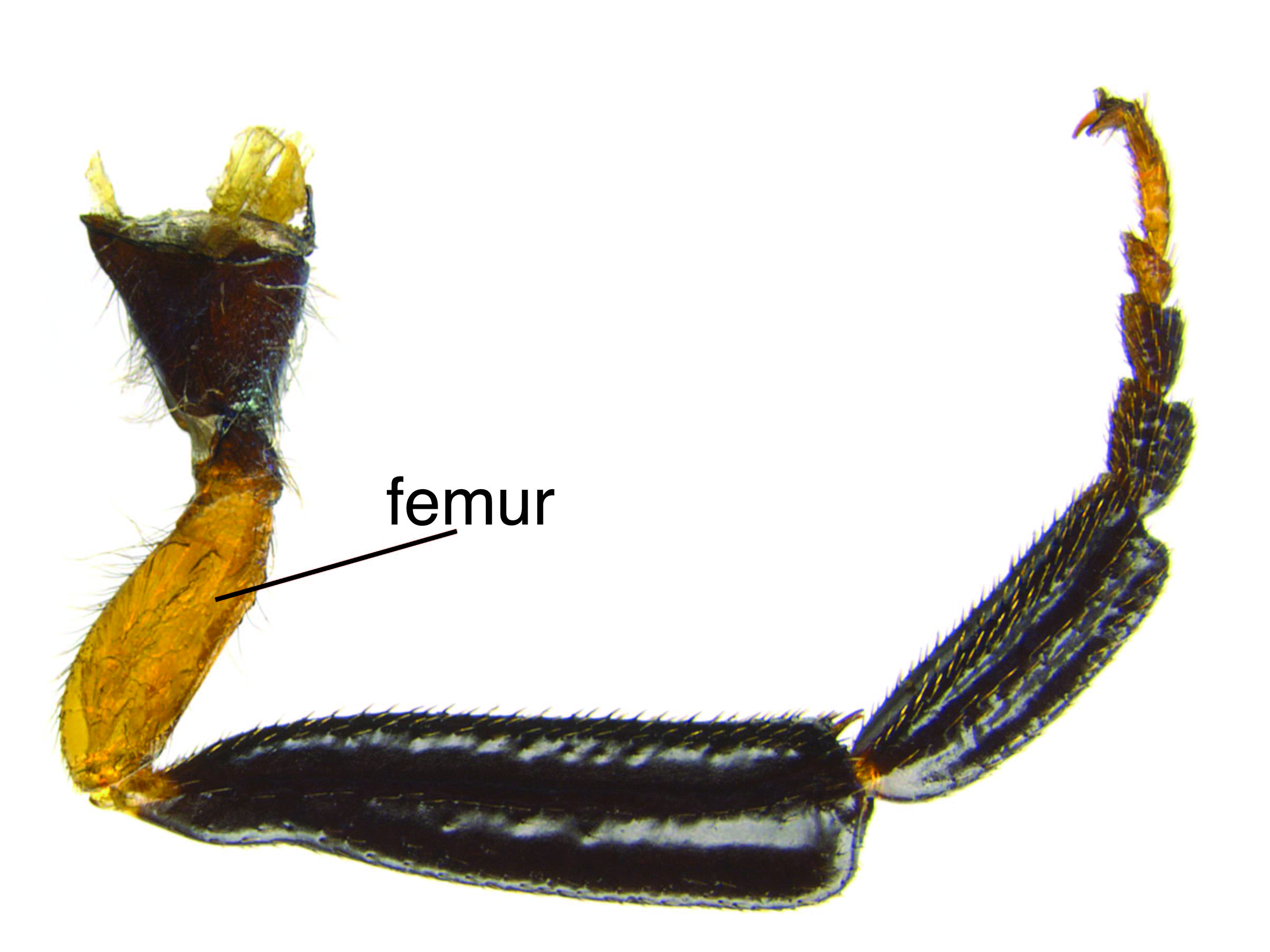 (Taeger et al. 1998Taeger et al. 1998:
(Taeger et al. 1998Taeger et al. 1998:
Taeger A, Altenhofer E, Blank SM, Jansen E, Kraus M, Psychorn-Walcher H, and Ritzau C. 1998. Kommentare zur biologie, Verbreitung und Gefahrdung der Pflanzenwespen Deutschlands (Hymenoptera, Symphyta). Kommentierte Bestandsaufnahme 364 (3): 49-135.).
Cimbex quadrimaculatus is a destructive pest of almond trees in the Mediterranean and Southwest Asia. There are no North American records for this species (Bolu 2016Bolu 2016:
Bolu H. 2016. Distribution, life history and biology of almond sawfly ( Cimbex quadrimaculata (Müller, 1766), Hymenoptera: Cimbicidae). Scientific Papers Series A. Agronomy 59: 219-222.).
In North America, documented hosts for Cimbex include trees from the genera Ulmus (elm), Salix (willow), Alnus (alder), Betula (birch), Tilia (linden), Acer (maple), Populus (cottonwood), Ostrya (hop-hornbeam), and herbaceousherbaceous:
describing a plant that does not have a woody stem and is often close to the ground; e.g., grasses, forbs, and vegetable plants
plants of Lonicera (honeysuckle) (Smith and Middlekauff 1987Smith and Middlekauff 1987:
Smith DR and Middlekauff WW. 1987. Suborder Symphyta. In: Stehr FW ed. Immature Insects. Kendall/Hunt Publishing Company. Vol. 1: 754 pp., Smith 1993Smith 1993:
Smith DR. 1993. Systematics, life history, and distribution of sawflies. Pp. 3-32. In: Wagner MR and Raffa KF, eds. Sawfly Life History Adaptations to Woody Plants. University of Minnesota Academic Press. 581 pp.). Survey records indicate that C. americana will also feed on Malus (apple) and Prunus (plum) (Stein 1974Stein 1974:
Stein JD. 1974. Elm sawfly. Forest Pest Leaflet 142: 1-6.).
Cimbex larvaelarva:
the immature stage of holometabolous insects
 feed externally on foliage. The larvaelarva:
feed externally on foliage. The larvaelarva:
the immature stage of holometabolous insects
 are caterpillar-like, usually green or gray with dark spots or striping, and can be recognized by the one-segmented antennaeantenna:
are caterpillar-like, usually green or gray with dark spots or striping, and can be recognized by the one-segmented antennaeantenna:
the sensory organ emerging from the front of the head, usually between the compound eyes and above the clypeus; includes the flagellum, scape and pedicel
 and tarsal claws on each of the five-segmented thoracicthoracic:
and tarsal claws on each of the five-segmented thoracicthoracic:
of or on the thorax
legs. Mature larvaelarva:
the immature stage of holometabolous insects
 can measure up to 50 mm in length, making them among the largest sawflies (Smith and Middlekauff 1987Smith and Middlekauff 1987:
can measure up to 50 mm in length, making them among the largest sawflies (Smith and Middlekauff 1987Smith and Middlekauff 1987:
Smith DR and Middlekauff WW. 1987. Suborder Symphyta. In: Stehr FW ed. Immature Insects. Kendall/Hunt Publishing Company. Vol. 1: 754 pp.).
Larvae disturbed by predators react by excreting a clear defensive liquid, a behavior called “reflex bleeding”, then fall to the ground, where they become difficult to see. Mature larvaelarva:
the immature stage of holometabolous insects
 drop to the soil and build a cocoon in leaf litter, within which the prepupae overwinter. After pupation, the adult chews a circular hole in the cocoon and emerges (Liston and Späth 2006, Harizanova et al. 2012Harizanova et al. 2012:
drop to the soil and build a cocoon in leaf litter, within which the prepupae overwinter. After pupation, the adult chews a circular hole in the cocoon and emerges (Liston and Späth 2006, Harizanova et al. 2012Harizanova et al. 2012:
Harizanova V, Stoeva A, and Rector BG. 2012. Host range testing and biology of Abia sercea (Cimbicidae), a candidate for biological control of invasive teasels ( Dipsacus spp.) in North America. Journal of Hymenoptera Research 28: 1-11. https://doi.org/10.3897/JHR.28.3044).
Adults also feed and in some cases will use their mandibles to wound the wood of trees and feed on exuded sap. Male adults are known to fight one another for access to females using their expanded mandibles and hind femorafemur:
the third segment of the leg between the trochanter and the tibia
 (Vilhelmsen 2019Vilhelmsen 2019:
(Vilhelmsen 2019Vilhelmsen 2019:
Vilhelmsen L. 2019. Giant sawflies and their kin: morphological phylogeny of Cimbicidae (Hymenoptera). Systematic Entomology 44: 103-127. https://doi.org/10.1111/syen.12314). Cimbex are univoltineunivoltine:
describing an insect with a life cycle of one generation per year
(Smith and Middlekauff 1987Smith and Middlekauff 1987:
Smith DR and Middlekauff WW. 1987. Suborder Symphyta. In: Stehr FW ed. Immature Insects. Kendall/Hunt Publishing Company. Vol. 1: 754 pp.).
Though not exotic, Cimbex americana, also known as the “elm sawfly” can be highly destructive to both elm and willow trees. Eggs are laid up to 12 per leaf, so larvaelarva:
the immature stage of holometabolous insects
 can defoliatedefoliate:
can defoliatedefoliate:
to elimate a sizeable portion of the foliage of a tree, either by feeding on the leaves or otherwise causing a severe decreae in photosynthetic ability
entire canopies. This species is common in the Northeast, Midwest, and Northwest United States, and in Canada as far north as the Yukon Territory. Populations are also recorded in Texas, Florida, Colorado, and New Mexico (Stein 1974Stein 1974:
Stein JD. 1974. Elm sawfly. Forest Pest Leaflet 142: 1-6.).
World: This genus occurs throughout Asia, Europe, and North America (Taeger et al. 2010Taeger et al. 2010:
Taeger A, Blank SM, and Liston AD. 2010. World Catalog of Symphyta (Hymenoptera). Zootaxa 2580: 1-1064.).
North America: Cimbex species range north of Mexico, as far north as Alaska and throughout the continental United States and southern Canada (Discover Life 2019Discover Life 2019:
Discover Life. Accessed January 2019. https://www.discoverlife.org, Cresson 1880Cresson 1880:
Cresson ET. 1880. Descriptions of new North American Hymenoptera in the collection of the American Entomological Society. Transactions of the American Entomological Society 8 (1): 50-51., Stein 1974Stein 1974:
Stein JD. 1974. Elm sawfly. Forest Pest Leaflet 142: 1-6.).
Map data from: GBIF.org (26 June 2019) GBIF Occurrence Download Cimbex
Details about data used for maps can be found here.